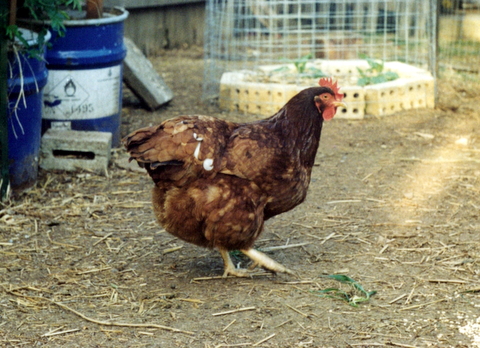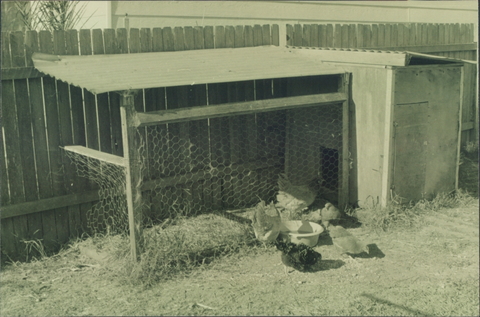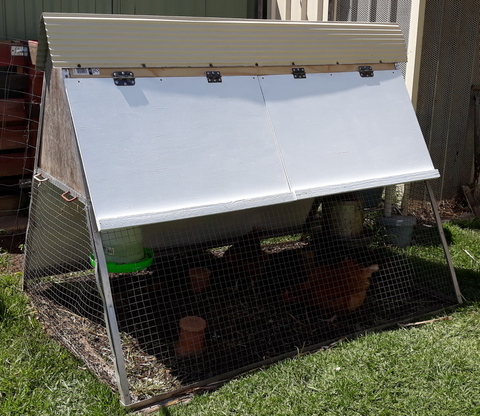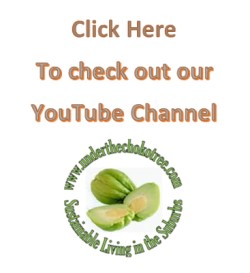While Covid-19 was never a threat to our beloved backyard chooks there is a new virus on the horizon (or even closer) that can be – The dreaded influenza A virus, also known as bird flu! There are a number of strains out there, generally divided into two categories: low pathogenicity and high pathogenicity. As you would expect, the high pathogenicity strains are the ones to that pose the greatest risk.

Thankfully, Australia is currently (Autumn 2025) free of the worst strain, the H5N1 high pathogenicity strain that is causing so much concern in north America. It has jumped species barriers and infected quite a few species including birds, mammals, and domestic livestock, with infections in wild and domestic cats, seals, bears, foxes, cattle, goats, pigs and even humans. It is spread by migrating wild birds and so is very difficult to contain. The experts tell us that it is not a case of ‘if’, but ‘when’ it rears its ugly head in Australia.
But that is not the good news! The H7N8 high pathogenicity avian flu is already in Australia and has caused the destruction of chickens in Victoria, the ACT and NSW to contain it. Thus the drop in egg supply over the last few months. Those of us who keep our own backyard chooks have not been affected by egg supply problems, for obvious reasons, but how long will that last and what could, and should we be doing to minimise the risk to health of our chooks, and to us.
Chooks
Back in the days before bird flu was even thought about (40+ years ago), I put in a chook run, with a small shed to provide an area to sleep and lay, in our back yard and staffed it with half a dozen bantams. Over the years we replaced the bantams as they passed on, with full sized chooks such as Rhode Island Reds, Australorps and even rescue chooks. After about ten years of keeping the chooks I came across the idea of a chook tractor and decided that was the way forward for us. Moving from an open run to an enclosed chook tractor had two major effects because it isolated our chooks from the local wild bird population –
- Our feed usage dropped by about half
- We stopped getting the regular outbreaks of bird mites, which were uncomfortable for the chooks and also me, as I would get infested when I crawled in to clean out the shed.
So, it seems to me that the first rule of backyard chook biosecurity is to set up your system so that your backyard chooks, their food and their water are isolated from local wild bird populations.

The original pen and open run
Here are some other ideas for limiting the possibilities of introducing something unpleasant into your backyard flock –
- Wash your hands before handling the chooks, eggs, feeders, waterers and other chook related equipment and paraphernalia.
- If you want to provide feeders and/or waterers for wild birds, keep them well away from your chook area. We don’t feed wild birds but do provide water and the waterers are all in our front yard, while our chooks are in the backyard.
- If you are buying in new chooks, make sure you only get healthy birds from a reputable breeder. Even so you may wish to keep them isolated from your existing flock for 30 days, while monitoring them for any symptoms of bird flu (see below). While you are at it, ensure that when you are caring for your chooks (feeding, watering etc.) work with your original flock first to reduce the risk of any contamination from the new birds.

We found installing the chook tractor reduced their contact with wild birds almost entirely
- If you have mates who keep chooks, you may wish to prevent them from being in contact with your chooks, again, to reduce chances of contamination. The same goes for you if you are visiting their place, stay away from their chooks!
• You may want to consider keeping a chook diary/history, where you can note down things such as flock health in general and any untoward symptoms you see (and what you do about them), feed/water consumption, feed changes, age of your chooks, plus any other observations you consider worthwhile. - Store feed in steel bins or drums to prevent contamination by rats (This is always a good idea anyway, and on the odd occasion I have not followed this rule, the rats and mice have unerringly found my stash, and had a party!)
- If you are not using town water to supply your chooks, consider where you are getting the water from (eg rainwater tanks) and if they could become contaminated by wild bird excreta being washed off the roof into a tank.

Chook tunnels can reduce encounters with wild birds, while letting the chooks get where they need to go
Bird Flu symptoms to look out for –
‘sudden death’ is probably the most important symptom and if one or more of your flock die suddenly and unexpectedly you must notify your state agriculture/primary industry dept or the commonwealth Department of Agriculture, Forestry and Fisheries (DAFF). Bird flu is a notifiable disease in Australia.
Other symptoms (according to Agriculture Victoria – see link below) include
- Respiratory symptoms (noisy or rapid breathing, coughing, sneezing, increased nasal secretions)
- conjunctivitis
- swelling of the head
- purple discolouration of the comb and wattles
- rapid decrease in feed and water intake
- decreased egg production
- ruffled feathers
- depression
- closed eyes
- diarrhoea
- Neurological symptoms (twisted neck, inability to stay upright, inability to fly, uncoordinated movement, walking or swimming in circles, partial or full paralysis).
Avian influenza | Poultry diseases | Animal diseases | Biosecurity | Agriculture Victoria
People
If things are set up to limit the contact between wild birds and your flock, plus any other potential sources of infection such as new chooks and other chook keepers it is unlikely that your chooks will become infected so the risk to you and other family members will be low.
However, low risk does not mean no risk and there are a few simple actions you can take to reduce the risk even further, including –
- Washing your hands after handling chooks, eggs, waterers and feeders and/or cleaning out any chook related spaces.
- Getting a pair of designated chook shoes, to be worn when in or around the coop at any time, and to be stored outside in a safe area away from kids and such, that are not worn inside the house.
- When cleaning chook areas, consider wearing an N95 dust mask. If you have a beard, (as I do!) the N95 mask will not seal and so not protect you. You can probably coerce other family members (preferably beardless) into doing it for you.

While they aren't exactly fashion statments, my chook shooes are certainly functional!
All this may seem to be a bit over the top, but when you think about it, most of the actions do make sense anyway, and if your system is already set up the right way, when avian virus H5N1 makes it to our sunny shores, you will be ready for it.


